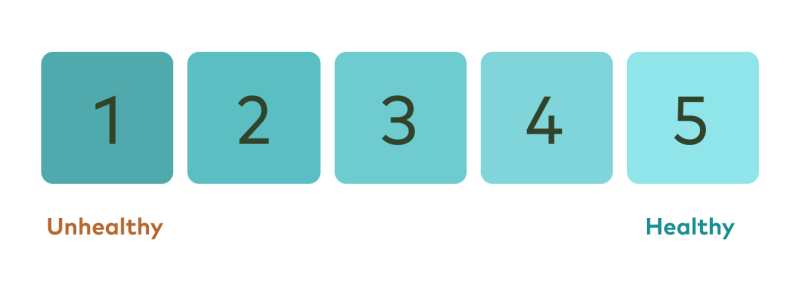Menu
Improving financial health: Helping customers achieve their goals
New survey: Early signs indicate that a customer’s financial health improves as they use Tala.

By: Vala Burton, Director of Insights, and Danny Salinas, Director of Analytics Engineering
Tala’s mission is to enable financial agency for the Global Majority. To this end, we are always looking for ways we can better partner with our customers to help them achieve their financial goals. While we speak to our customers regularly about their needs, and have previously worked to measure the impact of our credit on their lives, we wanted a more scalable way to understand and measure their holistic financial situation over time.
Financial health is one such measure that helps paint a picture of an individual’s full financial life — assessing how effective a person is at managing their finances through tools like investing, spending, saving, and borrowing, and navigating through challenging financial situations.
By measuring our customers’ financial health, Tala can unlock unique insights that enable us to serve them better. We’ve observed, for example, that as customers use Tala over time, their perceived financial health improves and they feel more confident about their future — opening them up to new opportunities.
In this post, we will review the discovery work we’ve been invested in since 2018, what we’ve learned about our customers’ financial health so far, and how these insights can help shape new ways to unlock our customers’ potential.
First, we defined “financial health”
Beginning in 2018, Tala tested different approaches to defining and measuring financial health. Building on work from both the Financial Health Network and Financial Sector Deepening Kenya, we created our own four-part definition of financial health to align with our mission of enabling financial agency:
- Use: the ability to manage daily finances, including transactions
- Protect: the ability to prepare for and to cope with financial emergencies and shocks
- Grow: the ability to plan, save, and invest for the future
- Happiness: a positive sentiment towards one’s financial life
While the first three building blocks are common to many definitions of financial health, the happiness measure is Tala’s unique addition. With this measure, we can better understand customers’ sentiments about their financial life and design products that support customer agency through a holistic lens.
Next, we tested our measurement tool
Once we were aligned on our financial health definition, we created and tested a survey to assess customers’ perceptions of their financial health across each of the four building blocks. Customers answer each survey question on a Likert scale of 1-5 (strongly disagree to strongly agree), making it easy to translate their answers into a numeric value. The average of a customer’s answers becomes their overall Tala Financial Health Score. In other words, a customer with a score of 4.2 has answered mostly 4s and 5s and is generally considered to have strong financial health.

We launched this survey in 2020 to a random sample of over 200,000 customers across Mexico, Kenya, and the Philippines and have continued to capture responses from our customers since then. Read more on our methodology below.
What we’ve learned about financial health so far
While we are still scratching the surface of the survey data we’ve captured over the past three years, our initial, high-level findings have helped us validate our approach and created a valuable baseline and learnings.
For starters, we see that, on average, all survey respondents — regardless of demographic or history with Tala — have a Tala Financial Health Score of 3.8. This average falls within our expectations given what we know about our customer base overall and indicates a customer base that is somewhat healthy, with room to improve.
To better understand which dimensions of financial health are driving the overall score, we next looked at each building block individually — Use, Protect, Grow, and Happiness. The global average for the Use set of questions is 4.11, indicating that customers generally feel they have the right resources to manage their day-to-day needs effectively. Our scores for Protect (3.96) and Grow (3.96) followed next, showing that there is room to improve our customers’ abilities to weather emergencies and plan for the future.
The Happiness building block scored the lowest, at 3.17. For this building block, customers ranked how strongly they agreed or disagreed with statements like “I feel happy about my financial situation” and “I am stressed about my financial future.” Despite feeling happy about their financial situation, most respondents also reported some level of stress about their future. This may indicate that our customers, while generally feeling they have the right toolkit for today, know that life is often unpredictable. They need services that help them build resilience for tomorrow.
Overall, these initial findings offer exciting indicators of how Tala already supports customers’ financial health as well as areas of focus for improvement.
Repeat customers score higher on Happiness than first-time customers
We can further complicate this picture by looking at the Financial Health Scores of different customer segments. We analyzed data from 10,797 survey respondents and separated them into anonymous groups based on their length of time as a customer in order to compare the scores of first-time and repeat customers.
When we compared the Happiness scores for first-time and repeat customers, we found that repeat customers scored higher on Happiness — and that the delta between first-time and repeat customers’ Happiness scores was larger than the delta for any other building block. This was true across all Tala markets. Additionally, questions related to confidence about the future were the biggest positive driver of the Happiness score. This may indicate that returning customers feel more equipped to navigate uncertainty, knowing Tala is their financial partner, or that we’ve helped them establish more stable financial lives through access to credit.
The majority of customers see their Financial Health Score improve over time
While we have promising signals that longer-tenured customers are more financially healthy than early customers, we want to better understand the role that Tala plays in driving these improvements. To investigate this question, we looked at the Financial Health Scores of customers who took the survey more than once to see how their scores changed over time. Of these customers, the majority (more than 50%) saw their scores improve.
While we will need to do additional analysis to understand the drivers of both score improvements and score declines, the ability to monitor changes in our customers’ financial health over time will undoubtedly enable us to better serve their needs.
Using financial health insights to better serve customers
Financial health builds financial agency, so we’re optimistic about these early indicators of improved financial health. We’re also committed to continue using this data to improve our products and services. Our customers’ perceptions of their own financial health can be a powerful input to our product development, helping us ensure we have the right range of products to meet their holistic financial needs; importantly, these perceptions can also be an output — helping us understand the impact of our work over time. Collecting these perceptions at scale is thus critical to Tala’s mission, and we are excited to continue learning from this data as we go.
Notes on methodology
Tala conducted a longitudinal survey to assess customers’ financial health, building on work from the Financial Health Network and Financial Sector Deepening Kenya (FSD-Kenya). The survey was originally sent to a random sample of over 200,000 people across Mexico, Kenya, and the Philippines. The first-round response rate was between 2-3%.
The survey totals 20 questions — 5 questions for each of the 4 building blocks of financial health (Use, Protect, Grow, and Happiness). The questions are phrased as factual statements, such as, “Last month I paid all of my expenses on time,” or sentiment statements, such as, “In general, compared to other people my age, I am very good at managing my day-to-day finances.” Respondents rank these questions on a Likert scale of 1-5; one meaning strongly disagree, and five meaning strongly agree. Inverse score questions were also included.
The survey then calculates a total Financial Health Score between 0-5 for each respondent by averaging the score for each individual question. The score is tracked in our survey tool. Based on the customer’s score range, we provide them with educational tips to improve their health.